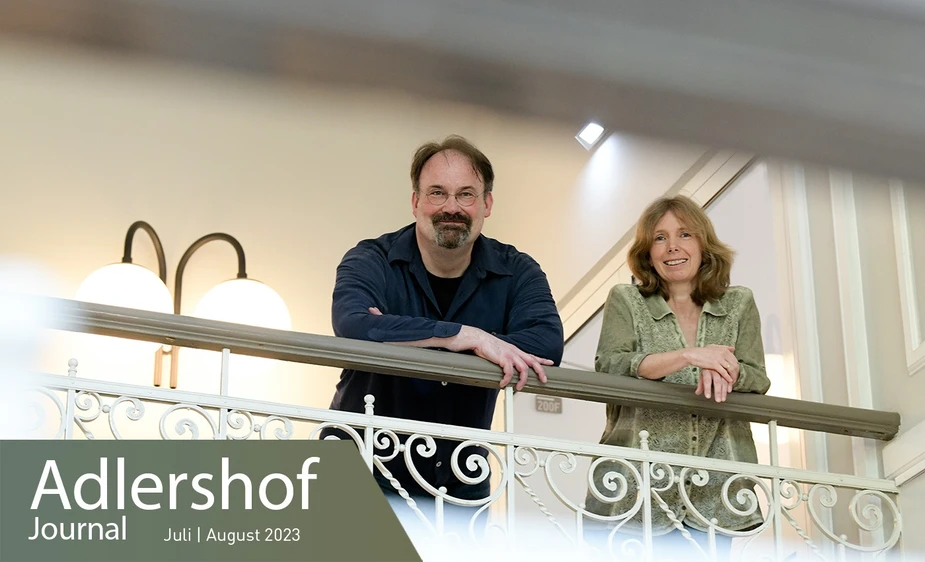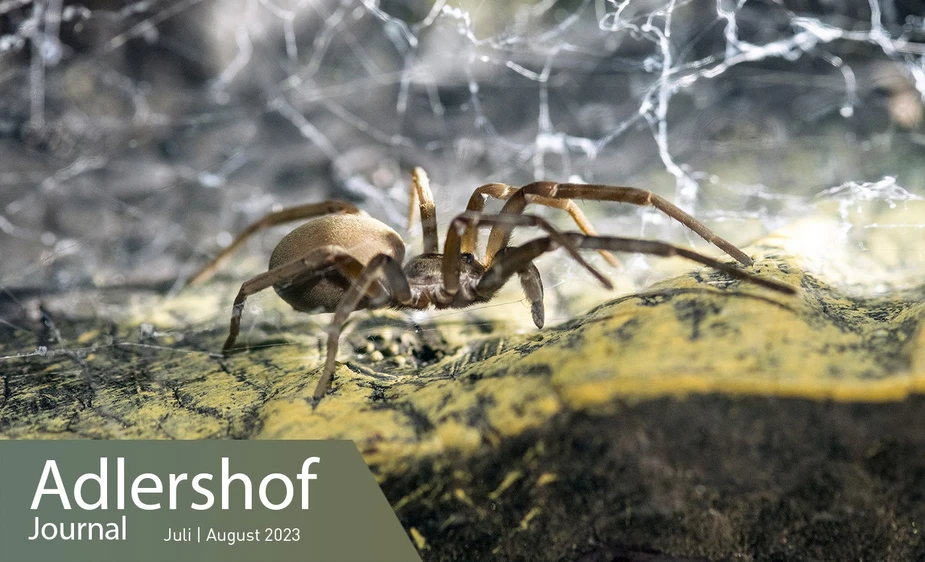Non-stick surface – Inspired by the curling iron of spiders
Adhesion forces can be significantly reduced on surfaces that are provided with special nanostructures
Why don’t spiders stick to their threads? This question was the starting point of an international research project and Jörn Bonse and Karin Schwibbert belonged to the team addressing it. Both are researchers at Federal Institute for Materials Research and Testing (BAM). “The thinner a fibre is, the more relevant the Van der Waals forces become,” says the physicist Jörg Bonse, embarking on a complex explanation. “They ensure adhesion, i.e., the sticking of fibres to all kinds of surfaces. And that is a problem when you’re working with materials that are only a few nanometres thin.” That sounds plausible enough. When producing textile fleeces, e.g., for respiratory protection masks, the thin fibres should not cling to the tools being used.
The researchers searched for a solution in nature, and found one in spiders. “There is a certain type of spider, the so-called cribellate spider. They produce extremely fine nanofibers,” he explains. “To make sure they don’t stick to the spider threads themselves, they have an organ on their hind legs. The calamistrum. That’s Latin for curling iron.” Nature endowed this organ with a special structure that has very fine curved hairs on its surface and makes sure the silk doesn’t accidentally become a spider trap. “We can also apply these structures to materials using a laser,” he says, bringing his introduction full circle. “And so, the idea was born to translate the principle of the calamistrum to technical surfaces.”
The idea was realised by researchers in an open FET project of the European Union. FET stands for Future And Emerging Technologies and is a funding line for excellent high-risk research. “The entire project was coordinated by Johannes Heitz of Johannes Kepler Universität Linz,” says Bonse. “And the know-how on the spiders came from the team around Anna-Christin Joel, a working group leader at Rhine-Westphalia Technical University (RWTH Aachen).
Moreover, Greek colleagues from the Foundation of Research and Technology Hellas, Romanian researchers from the National Institute for Laser, Plasma and Radiation Physics, and ELMARCO, a Czech industrial partner, were involved in the project. We used an ultrashort pulse laser at BAM to apply the special nanostructures to steel, titanium, aluminium, and many other metallic materials,” explains Bonse, who has been working with laser material processing for many years now. “Our colleagues in Linz were then able to show that, with the best-possible structure, the adhesive forces were reduced by up to 72 percent.”
Katrin Schwibbert, too, is interested in these properties but for a completely different reason. “I have been investigating bacteria on surfaces for quite some time now. Typically, you want to avoid having them there because they form a biofilm,” explains the microbiologist. “However, we have now discovered that special cell appendages on the outside of some bacteria play an important role when making contact with surfaces.” Like a spider’s thread, these appendages are made from proteins. Their diameters are also similar. And so it made sense for the researcher to try to test the suitability of the structure of the spider organ to help prevent biofilms. For her, too, the project was a success: “We found out that the wave structure does, in fact, have a strong influence on the formation of biofilm,” she says. “In the best cases, we observed a decrease in the adhering bacteria by 90 percent in contrast to the comparison sample.” This is a success because it can prevent using biocides that trigger resistances to prevent bacteria on surfaces.
Kai Dürfeld, Adlershof Journal

